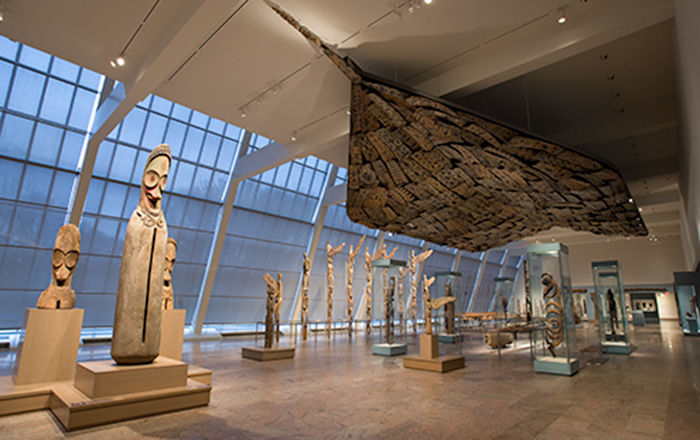Figure Fragment: Head
Not on view
Over 300 monoliths carved from basalt in this style were created in the Cross River region of Nigeria between 200 to 1900 a.d. These lithic monuments, which vary in size ranging from around two to over six feet in height, are usually found in circular groupings facing inward. The depiction of human features in stone is unusual in sub-Saharan Africa; additionally, the scale, number, and arrangement of the Cross River monoliths distinguish them from other groupings of anthropomorphic sculpture.
This particular example, with its elegant low-relief detailing around the eyes and the ornate cicatrization along the cheeks, led to its attribution to a class of objects created by members of the Nnam, one of eight clans that comprise the Bakor ethnic group of the Cross River region. Frequent motifs that appear on Nnam-style monoliths include a single spiral, double spiral, concentric circle, diamond, and triangle. This work is fragmentary and is the top half of what was originally a taller monolith. There is a clear differentiation between the sculpture's front and back, with the rear being devoid of inscription. The marks themselves refer to cicatrization patterns, which comment upon the wearer's level of initiation, ethnic, clan, and family identity. These markings may also relate to symbols that would have been painted on the body during festivals and ceremonies. All of the stones depict bearded figures, which suggest venerability and wisdom.
Though these objects have played an important role in the ritual life of successive generations of members of local communities, their original purposes can only be conjectured. They may represent the spirit of deceased ancestors. It is also possible that they were created as memorials to important political and historical figures. Local people maintain that the stones were created by otherworldly powers and emerged out of the ground like trees. The difficulty that carving and transporting these stones would have represented to their makers—as compared to wood, which would have been more easily available and workable—is a further indication of their importance.
This image cannot be enlarged, viewed at full screen, or downloaded.

